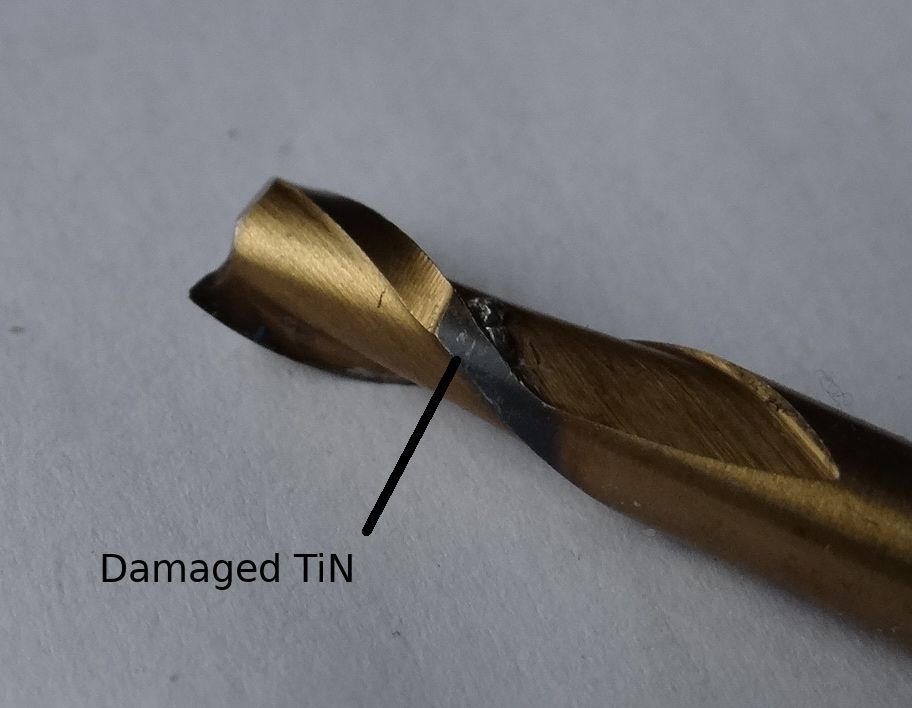Last week I was cutting a 6mm deep slot in Aluminium to make a window for an optical sensor.
Not really having the time, I rushed the job, ignored the mill's complaints, and ended up with aluminium stuck firmly in the cutter and blocking the flutes. (Not convinced it has a practical application, but I learned it's possible to soften Aluminium sufficient to make a horrible slot with only the frictional heat generated by a blocked cutter!)
Some of the aluminium unpeeled when attacked with a pick, but most was stuck solid.

I tried removing it chemically.
Aluminium resists acids, but reacts with alkalis. An hours immersion in a hot concentrated solution of Washing Soda (Sodium Carbonate) made very little impression. I switched to Caustic Soda (Sodium Hydroxide), which is much more aggressive. Roughly half the Aluminium dissolved over 90 minutes and most of the remainder was loosened enough to come off manually.
Success except the reaction also seems to have attacked the gold Titanium Nitride film used to improve the underlying High Speed Steel.

Does anyone have any comments on the method; is the TiN compromised or just stained?
Mostly though, does anyone know of a better way to remove aluminium stuck to a cutter? (Yes I know I the best way to avoid the problem is to let the cutter do the work and lubricate, but I guess a fair number of us get caught occasionally. Some Ali alloys are more likely to do this than others.)
Dave
Nick Hulme.






